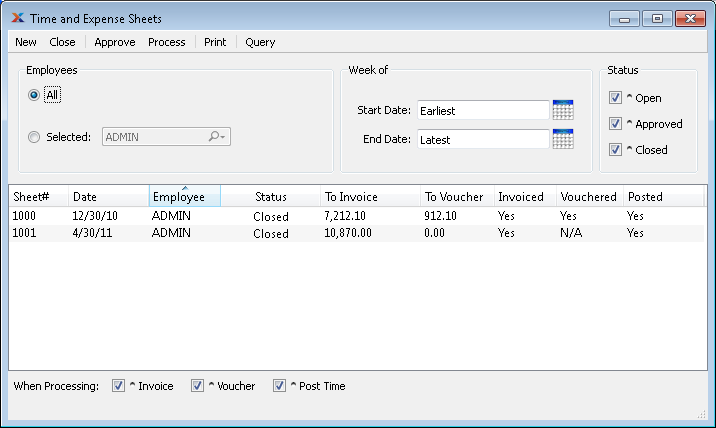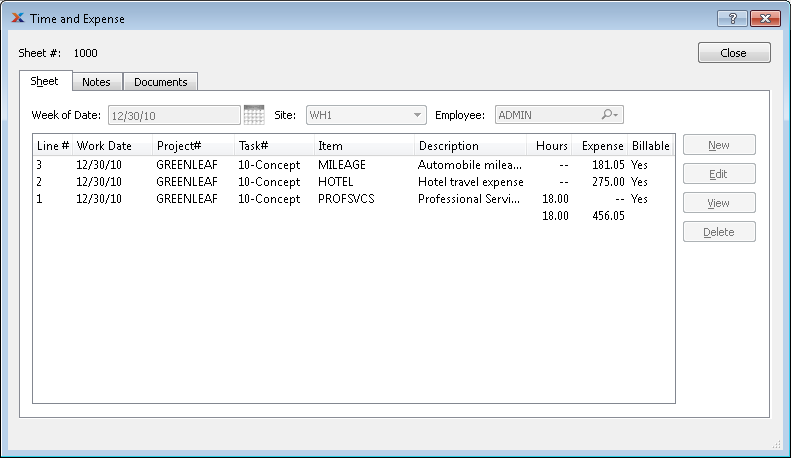
|
xTuple for Service Businesses Demo Guide |
The xTuple Time & Expense package consolidates both time entry and expense entry into one workbench format. Not only does this simplify things for users who are entering time & expense sheets, it also makes life easier for managers who need to approve and process time & expense sheets for the employees and contractors who report to them.
Throughout this chapter we will try to illustrate how time & expense sheets are handled differently for both regular employees and contractors. But let's begin with some core assumptions about both:
Should have compensation rate defined, but billing rate is optional. The compensation rate is used to determine the labor cost of employees when their time entries are posted to the general ledger (G/L). The billing rate may be used when employees are doing billable work for a customer, depending on the billing rate hierarchy defined for the customer. To ensure employees can be reimbursed for their expenses, employees must also be defined as vendors in the system.
Should also have compensation rate, but billing rate is optional. For contractors, the compensation rate is used to determine the amount owed to contractors for their time entries. Contractor costs are not posted directly as a labor cost, as it is for employees. Instead, contractor time is vouchered and then checks are written to the contractors—thereby closing the vouchers. Because contractors are paid both for their time and their expenses, contractors must be defined as vendors in the system. Like employees, the billing rate for contractors may be used when contractors are doing billable work for a customer, depending on the billing rate hierarchy defined for the customer.
To reach the workbench which is the starting point for all time & expense activity, use the following path: .

Some of the button options available in the toolbar may be disabled if you do not have the appropriate privileges. For more information, please see the System Administration chapter.
As you can see from the screenshot, the initial Time & Expense Sheets screen is packed with options for both employees, contractors, and managers. For now, we will focus on the basics of time and expense entry. Later in the chapter, we will explore how to approve and process time & expense sheets.
To create a new time & expense sheet, you would simply select the button on the Time and Expense Sheets screen. To review or edit an already-existing time & expense sheet, double-click on the sheet—or select the option from the right-click menu.

There are three primary characteristics of xTuple time & expense sheets:
Each one is unique to the employee or contractor who enters it.
They reflect both time and expense entries.
They are organized on a weekly basis.
Looking closely at a time & expense sheet, you can answer most if not all of the important questions about the line items contained on it. What project is the line item associated with? Is it an expense or time entry? Is it billable? And so on.
To add new line items to a time & expense sheet, simply select the button.